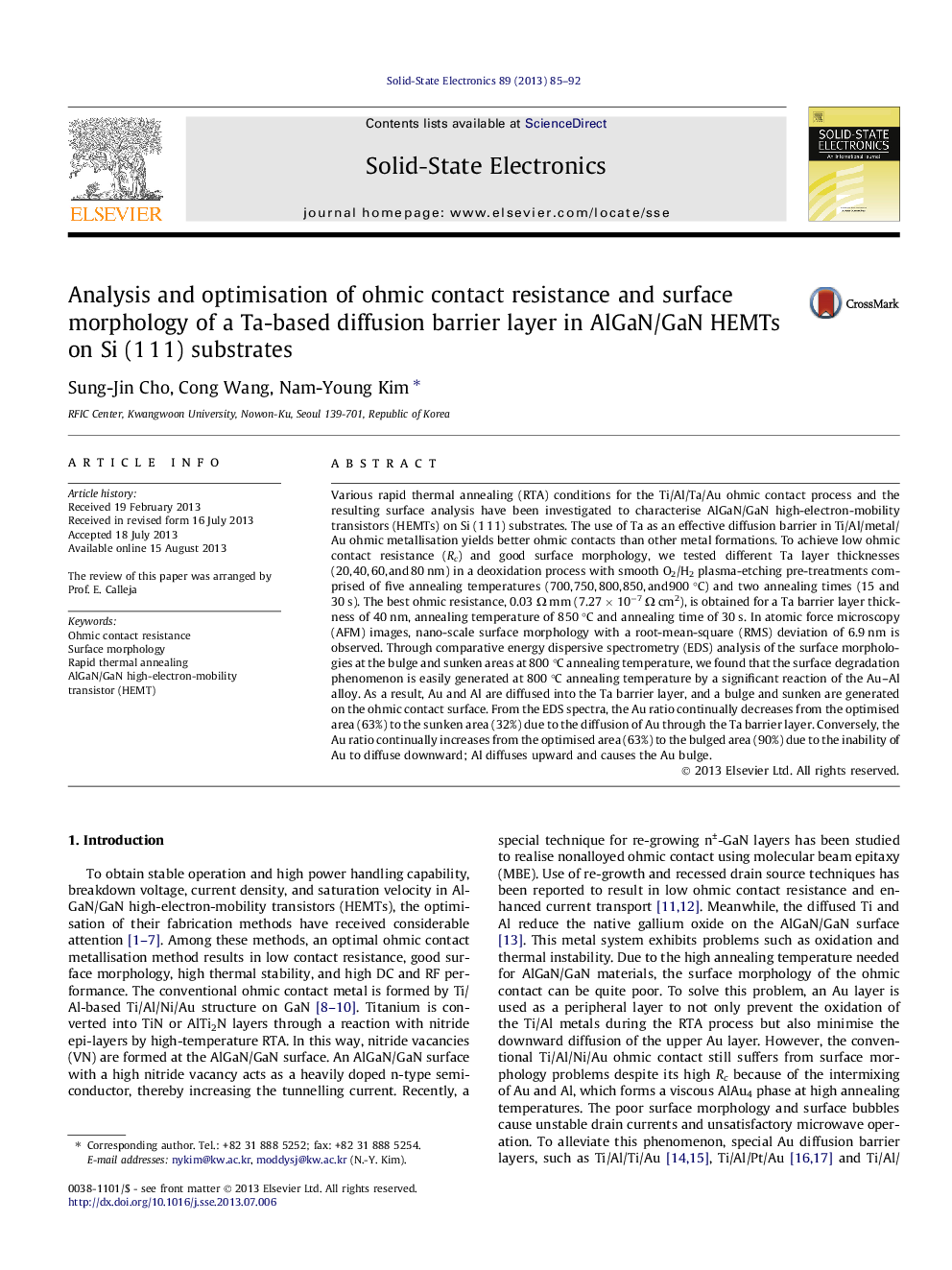| کد مقاله | کد نشریه | سال انتشار | مقاله انگلیسی | نسخه تمام متن |
|---|---|---|---|---|
| 752753 | 1462243 | 2013 | 8 صفحه PDF | دانلود رایگان |

• Ta based diffusion barrier layer is realised.
• Optimisation of ohmic contact resistance with surface morphology by RTA conditions.
• Surface degrade phenomenon is easily generated at 800 °C annealing temperature by significant react of Au–Al alloy reacting.
• Ta thickness is one of dominant factor affecting the ohmic contact resistance and surface morphology.
Various rapid thermal annealing (RTA) conditions for the Ti/Al/Ta/Au ohmic contact process and the resulting surface analysis have been investigated to characterise AlGaN/GaN high-electron-mobility transistors (HEMTs) on Si (1 1 1) substrates. The use of Ta as an effective diffusion barrier in Ti/Al/metal/Au ohmic metallisation yields better ohmic contacts than other metal formations. To achieve low ohmic contact resistance (Rc) and good surface morphology, we tested different Ta layer thicknesses (20, 40, 60, and 80 nm) in a deoxidation process with smooth O2/H2 plasma-etching pre-treatments comprised of five annealing temperatures (700, 750, 800, 850, and 900 °C) and two annealing times (15 and 30 s). The best ohmic resistance, 0.03 Ω mm (7.27 × 10−7 Ω cm2), is obtained for a Ta barrier layer thickness of 40 nm, annealing temperature of 850 °C and annealing time of 30 s. In atomic force microscopy (AFM) images, nano-scale surface morphology with a root-mean-square (RMS) deviation of 6.9 nm is observed. Through comparative energy dispersive spectrometry (EDS) analysis of the surface morphologies at the bulge and sunken areas at 800 °C annealing temperature, we found that the surface degradation phenomenon is easily generated at 800 °C annealing temperature by a significant reaction of the Au–Al alloy. As a result, Au and Al are diffused into the Ta barrier layer, and a bulge and sunken are generated on the ohmic contact surface. From the EDS spectra, the Au ratio continually decreases from the optimised area (63%) to the sunken area (32%) due to the diffusion of Au through the Ta barrier layer. Conversely, the Au ratio continually increases from the optimised area (63%) to the bulged area (90%) due to the inability of Au to diffuse downward; Al diffuses upward and causes the Au bulge.
Figure optionsDownload as PowerPoint slide
Journal: Solid-State Electronics - Volume 89, November 2013, Pages 85–92